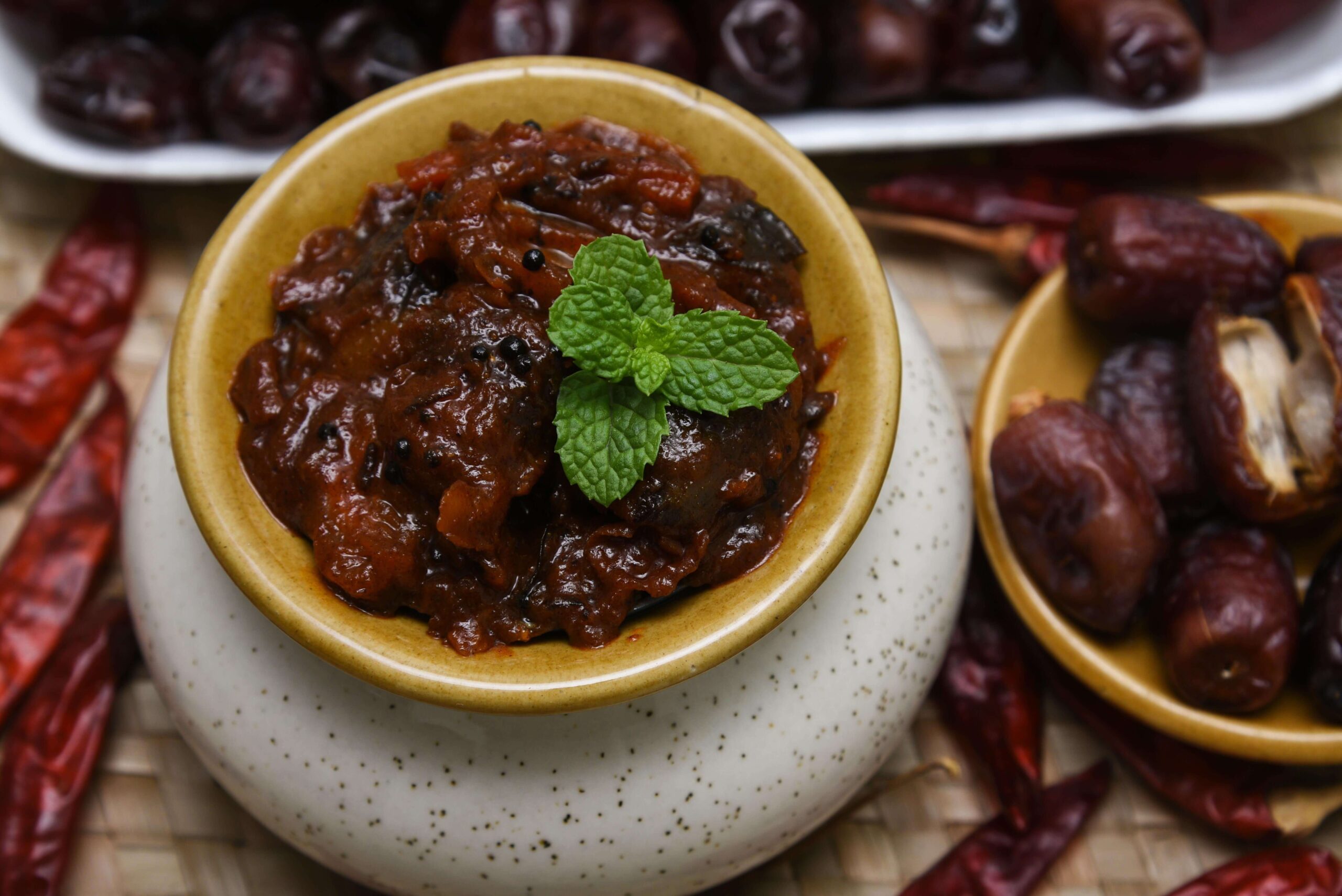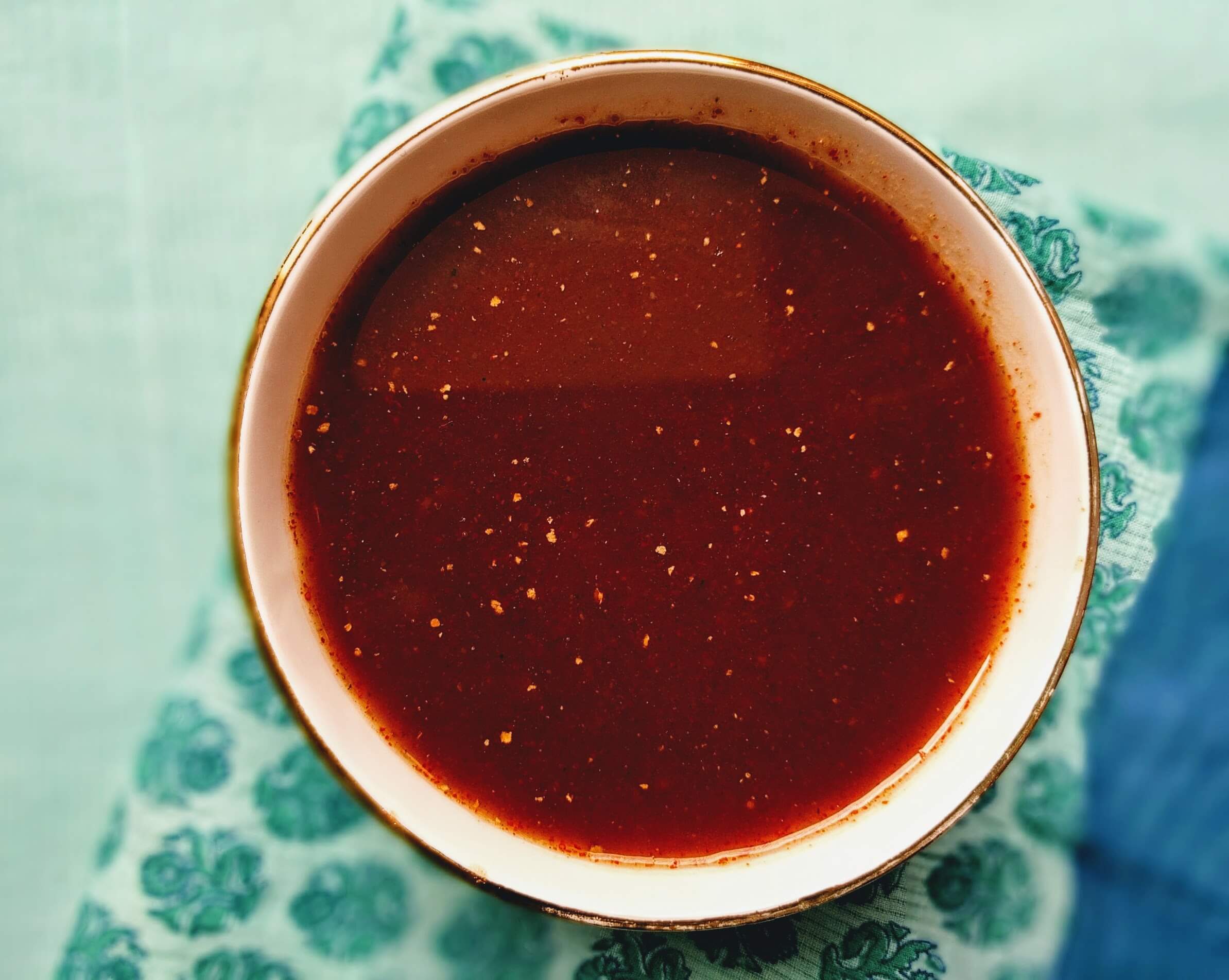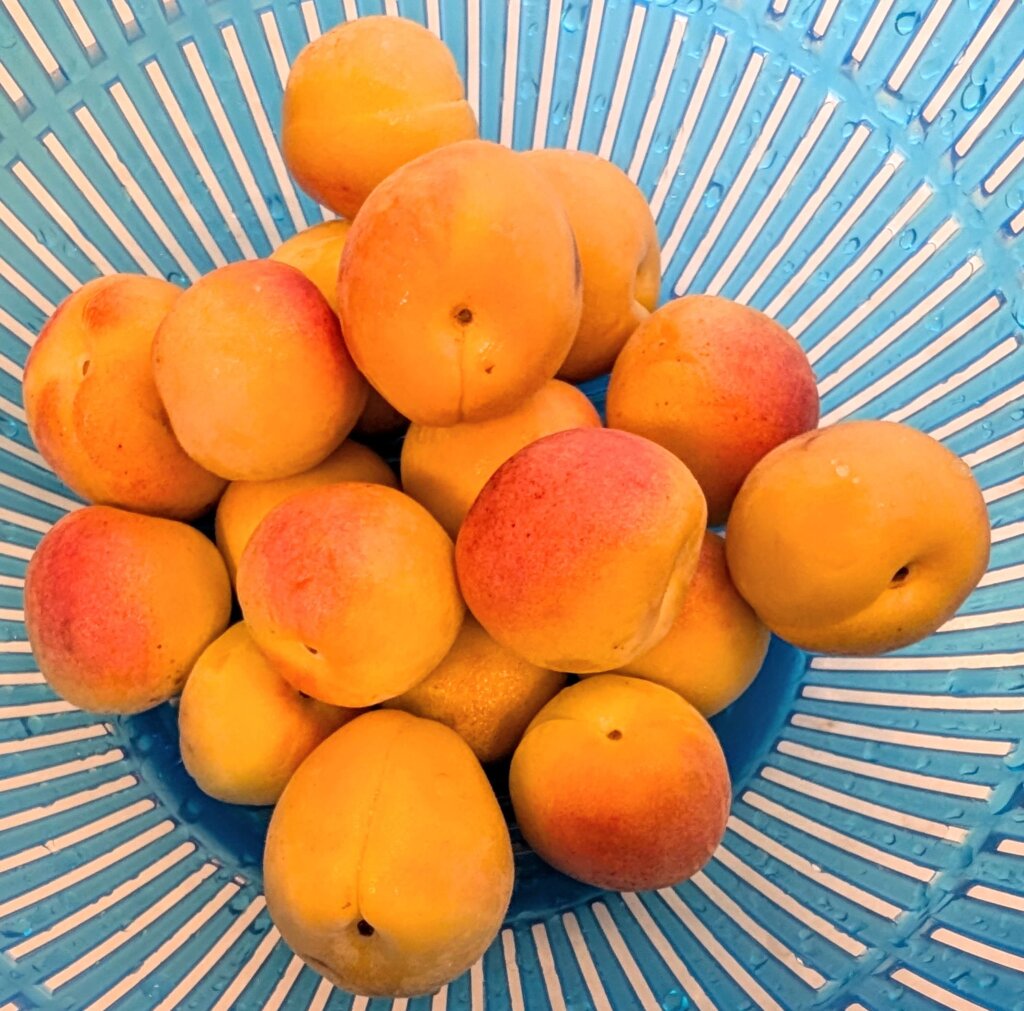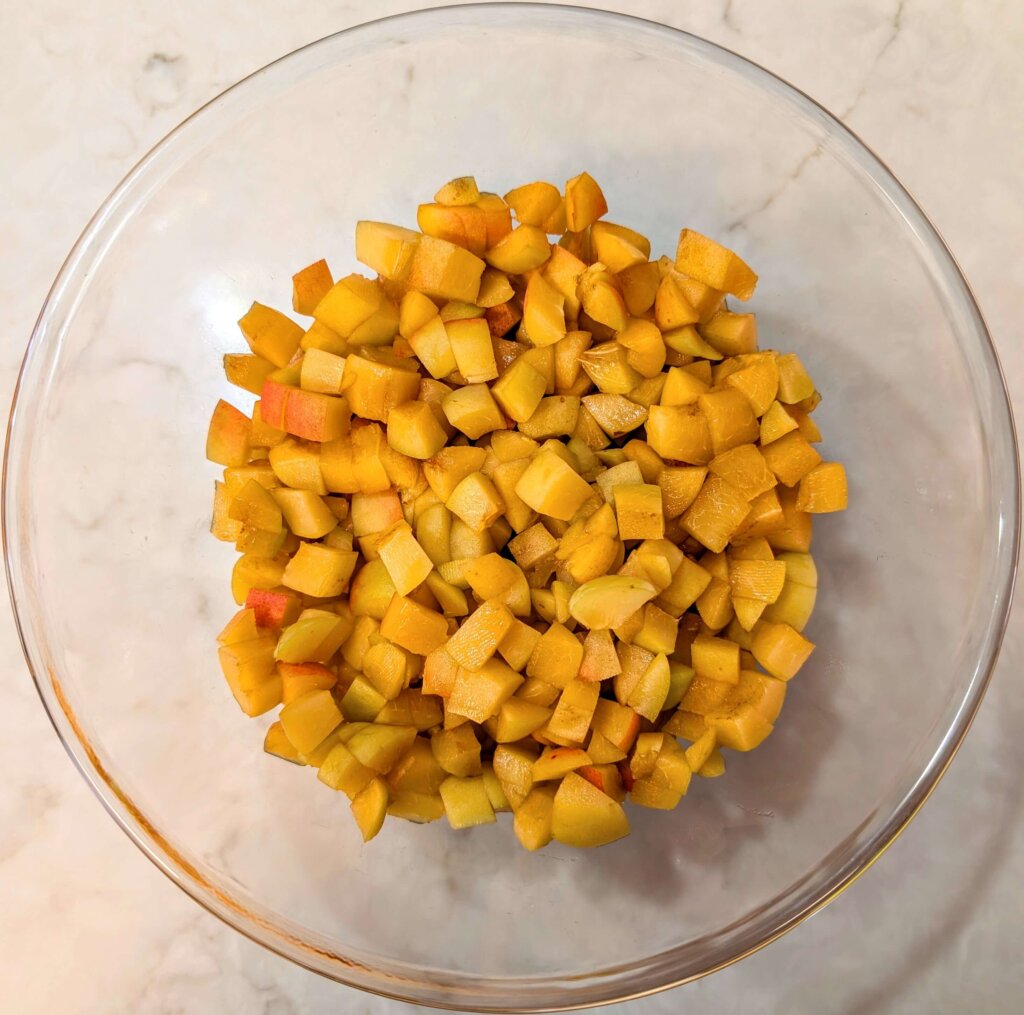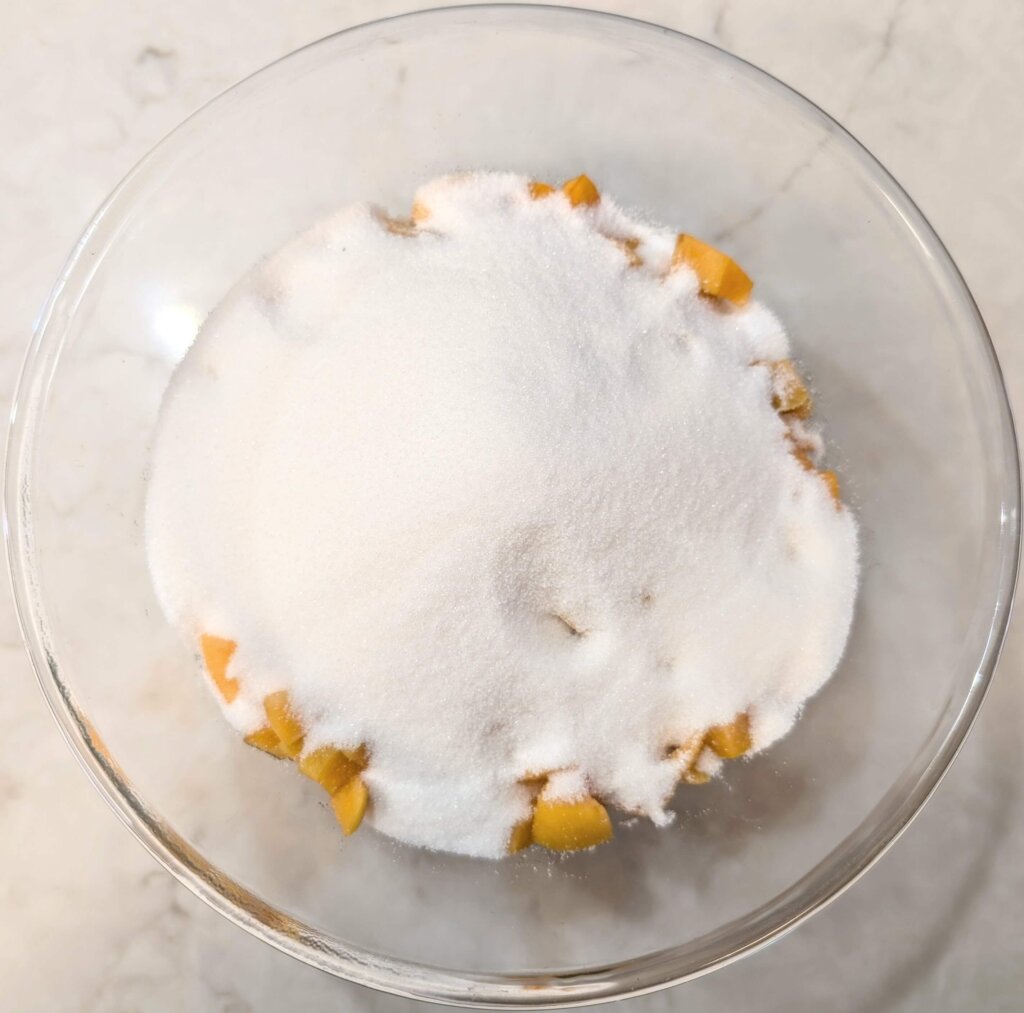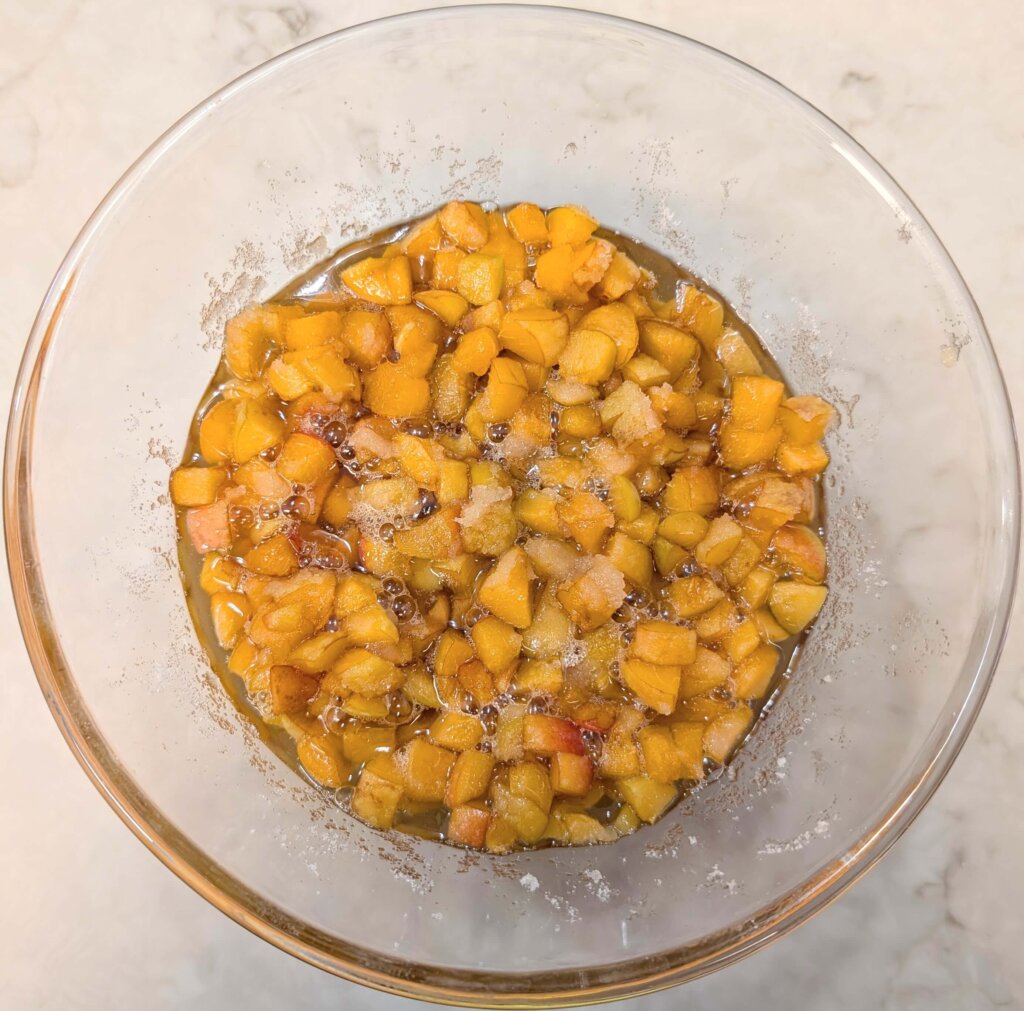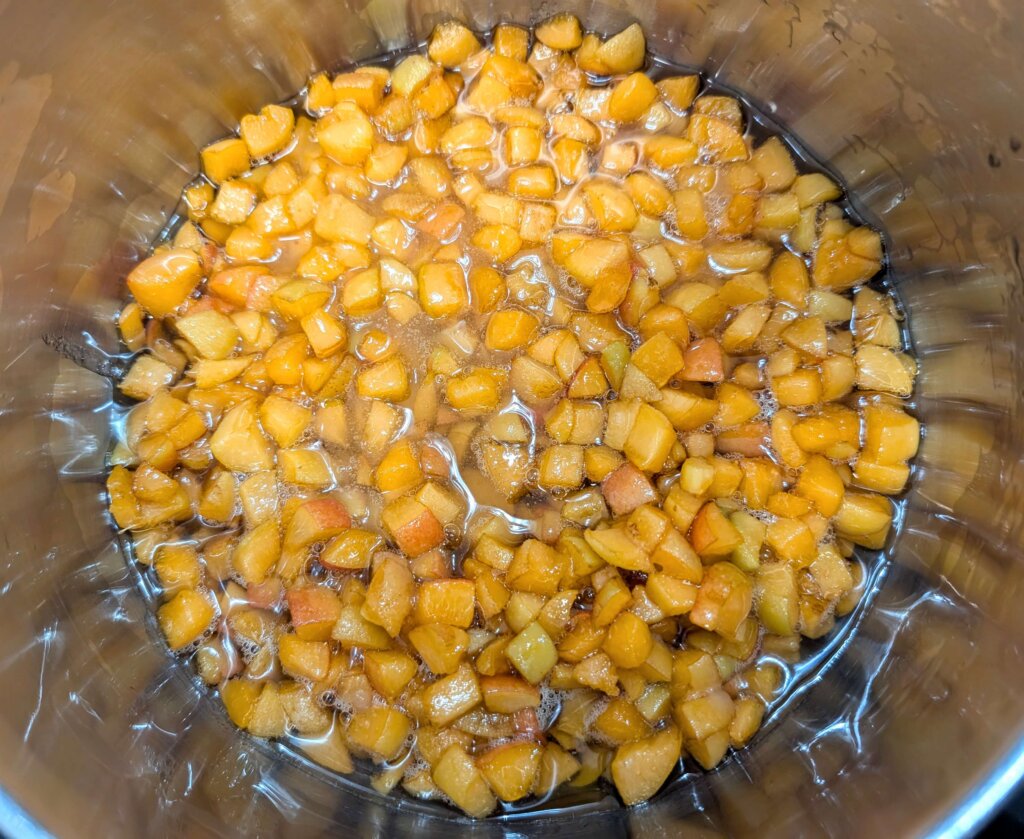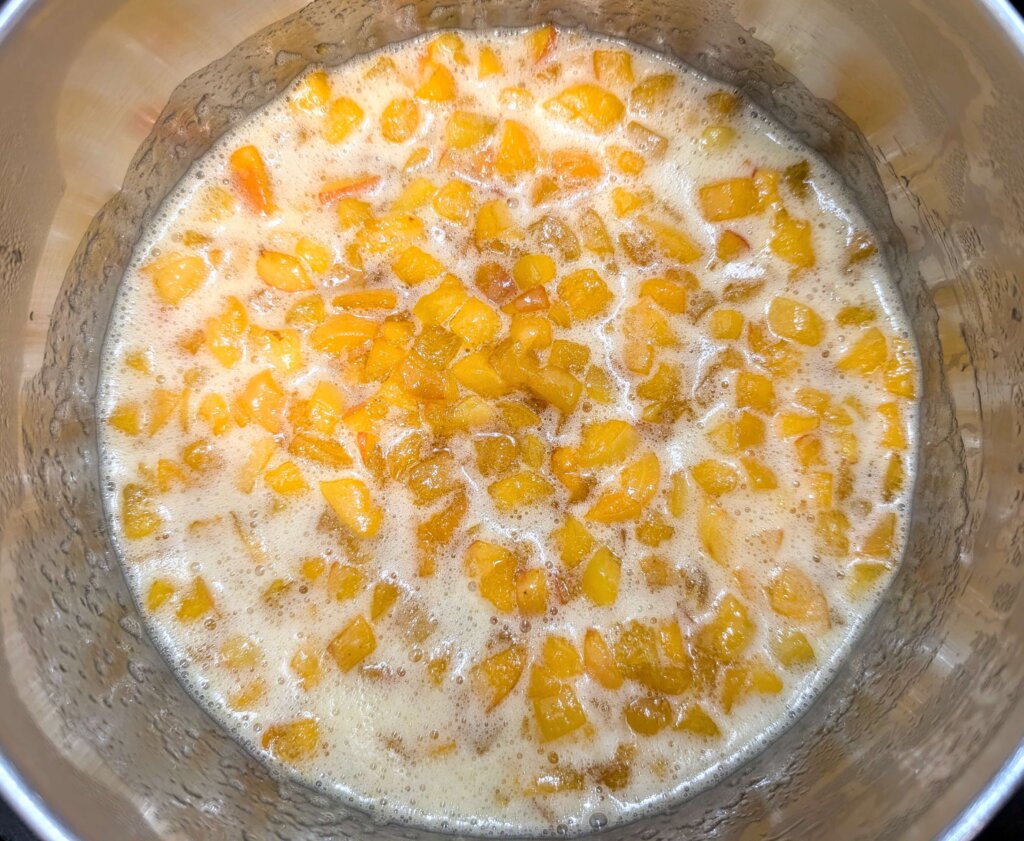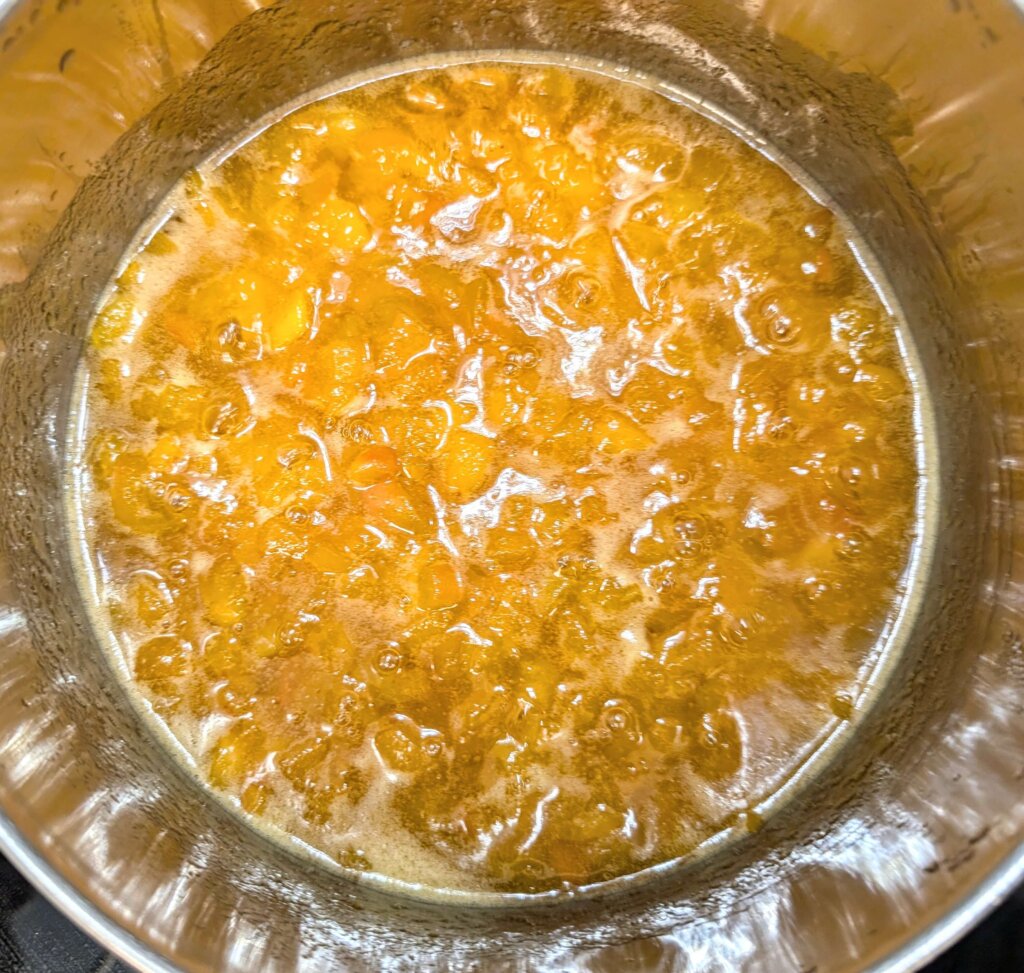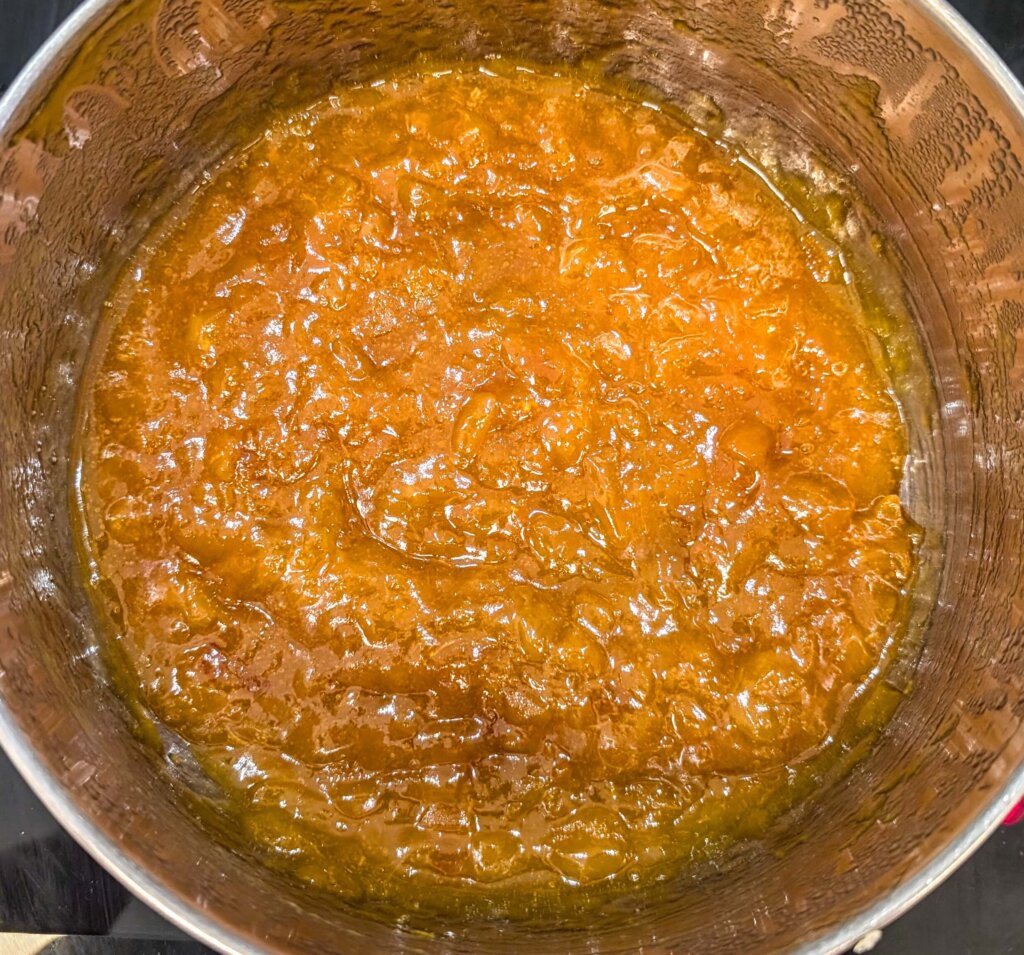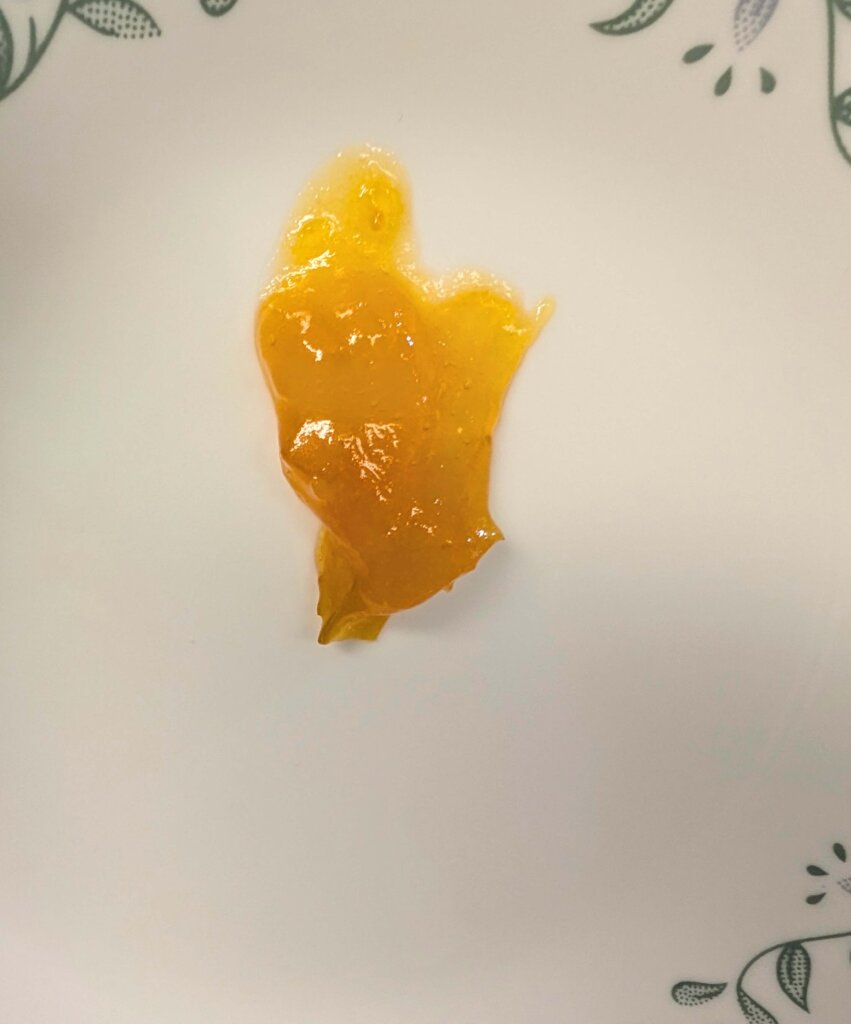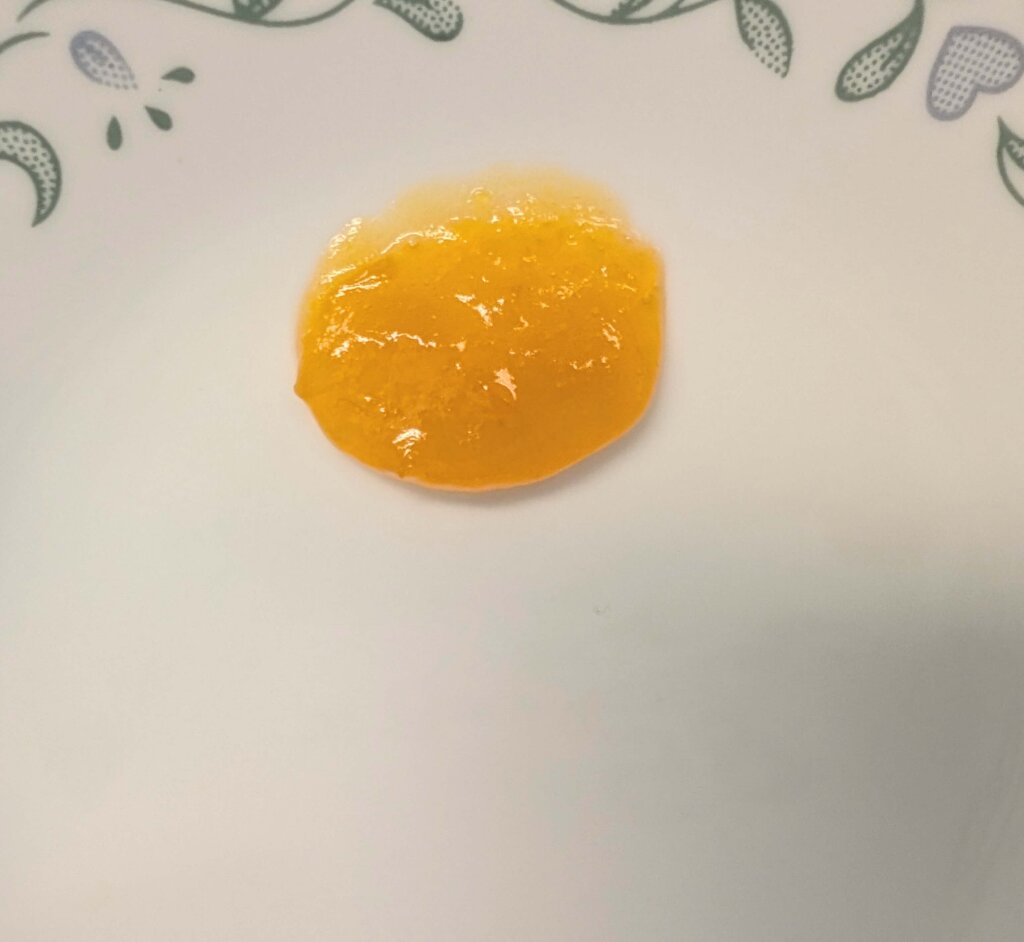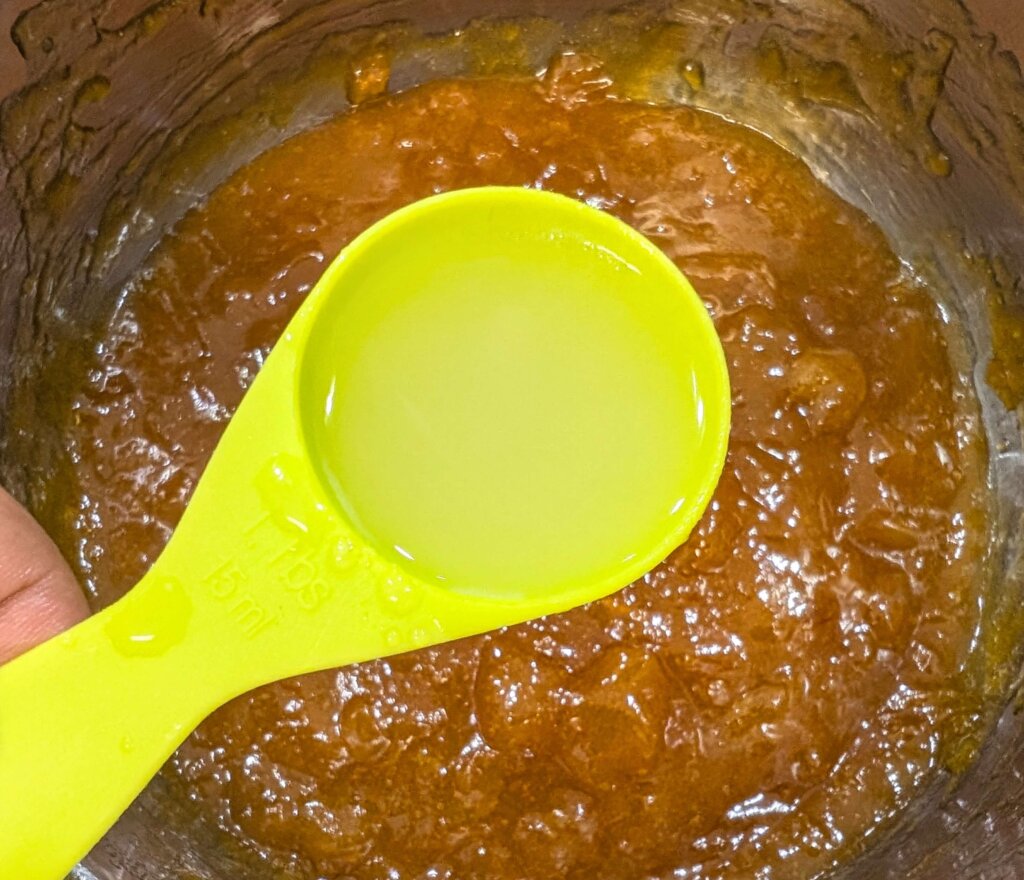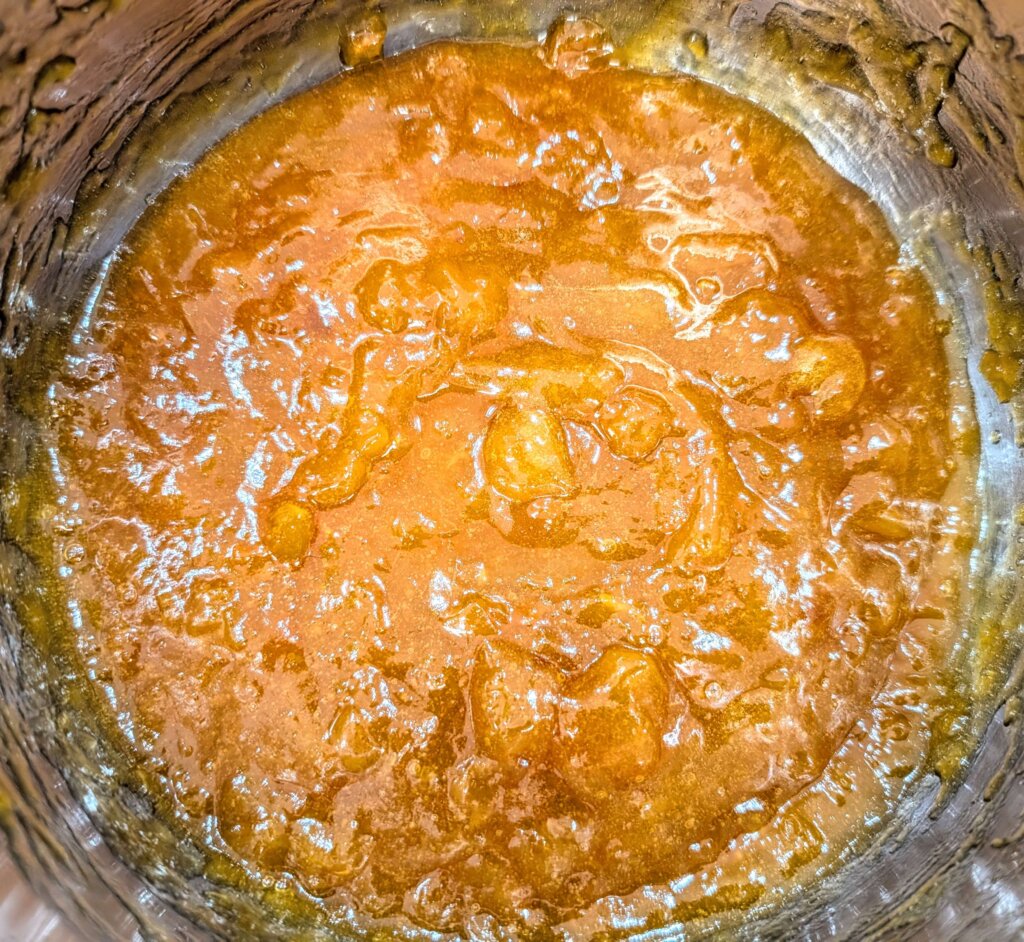About this apricot jam recipe
Apricot jam is a sweet and fruity spread made from fresh ripe apricots, simmered with sugar and lemon juice, until thickened. It is a great way to preserve the fresh flavor of apricots, and is a delightful addition to breakfasts and desserts.
Recipe highlights –
- Quick and easy
- Just 3 ingredients – apricots, sugar & lemon juice
- Made from fresh apricots, with skins on
- Low-sugar recipe
- Contains no pectin or artificial thickeners
- Makes a small batch with 1kg apricots, but can be scaled up or down
Homemade apricot jam is more flavorful and healthier than commercially processed jams, as it contains no additives or preservatives. It is a great option for those mindful of their sugar intake and who prefer natural ingredients. With just a few ingredients and straightforward steps, you can create a batch of this delicious spread in no time.
What is jam and how is it made?
Jam is a very versatile and enjoyable condiment which is generally made to preserve the flavors of seasonal fruits and extend their shelf life. It is made by heating ripe fruit with sugar and acid (usually lemon juice) until it gets to a thick spreadable consistency.
As the mixture boils, water evaporates, concentrating the flavors and sugars while reducing water activity, which preserves the jam by inhibiting microbial growth. Thus jams can last very long if properly preserved.
The consistency of jam is the result of a chemical process between pectin, sugar and acid. Pectin is a natural carbohydrate found in fruits. When heated with sugar and acid (to about 220F or 104C), it forms a gel-like structure that thickens and sets jams and jellies.
Apricots contain enough natural pectin for the jam to set properly, so you do not need to add any pectin separately. However some fruits like strawberries are low in pectin, so it needs to be added separately.
Main ingredients for apricot jam
You will need the following main ingredients for this apricot jam recipe –
- Apricots – Provide the fruity flavor and natural sweetness. Fresh ripe apricots work best for making apricot jam. However, if you want to use dried apricots, you can rehydrate them by soaking in water and and then boil them till soft.
- Sugar – It plays a vital role since it acts as a preservative, helps set the jam, and enhances sweetness. I prefer jams to be less sugary and more fruity, so I generally keep a 2:1 ratio of apricots to sugar by weight. As such, I have added 1/2 kg sugar for 1 kg apricots. However, you can taste the jam and add some more sugar towards the end if you find it too sour.
- Lemon – Adds acidity that helps the jam set properly and balances the sweetness.
- Flavorings (optional) – I haven’t added any extra flavoring here, however you can add a cinnamon stick, star anise or vanilla essence to your jam for a more complex flavor.
Should you remove the apricot skins before making jam?
This is a very frequently asked question about this jam so including it here. The simple answer is it’s your personal preference.
It’s generally not necessary to remove the skins of apricots when making jam. The skins soften during cooking and blend into the jam mixture, adding flavor and texture.
However, if you prefer a smoother jam, you can peel the apricots before cooking. I haven’t done it in this recipe but the rest of the steps should remain the same.
A rather simple way to remove the skins from apricots it to make a small crisscross cut at the bottom of the apricots and then boil them in water for 5-10 mins. The skin will shrink and you can peel it off easily.
Tips & suggestions
Here are a few tips to get the perfect consistency and texture for apricot jam –
- Macerate the apricots
- Allow the chopped apricots to rest in sugar for at least 1-2 hours before cooking. The sugar melts and creates a syrupy base which helps to soften the apricots, extract their natural sweetness, and reduce the cooking time needed to thicken the jam.
- However, if you are in a rush, this step can be skipped, you will just need to cook the jam for a longer time.
- Slow cook on low heat
- Cook the jam on low heat with occasional stirring to release the natural pectin in apricots. It typically takes around 30-40 minutes to reach the desired thickness, depending on the amount of fruit.
- Cooking on medium heat will speed up the process to about 20-30 minutes, but you’ll need to monitor and stir frequently to prevent sticking.
- Getting the perfect golden color for apricot jam
- Remove blemishes and black spots from apricots before cooking.
- Avoid overcooking the jam, as that might darken it.
- Skim off the foam that forms at the top of the jam while cooking for a translucent jam. You can also add a teaspoon of butter while cooking to help dissolve the foam.
- Testing doneness of the jam
- To check if the jam is ready, place a small amount on a chilled plate. Tilt the plate vertically; if the jam is still runny, boil it for a few more minutes to reduce the liquid.
- Texture of the jam
- If you prefer a slightly chunky consistency, chop the apricots finely. Chop larger pieces for more chunkiness.
- For a finer texture, make a puree before cooking, or mash / blend the mixture after cooking for smooth consistency.
How to store apricot jam
Proper storage of apricot jam. is necessary to preserve it for a longner time –
Short-term storage – If you are making a small batch of apricot jam, you can store the apricot jam in a clean airtight glass jar. It should be refrigerated and consumed within a couple of months for optimal freshness. Always use clean utensils when scooping out jam to prevent contamination.
Long-term storage – For extended storage, canning is the recommended procedure. Sterilize the glass jars and metal lids by boiling them in water for at least 10 minutes, add your jam to them and seal them tightly. For canning the jam, the filled jars are processed in a boiling water bath canner (this link offers a detailed explanation of the canning process). Canned apricot jam can be typically stored for up to a year in a cool, dark place.
What to serve apricot jam with?
Apricot jam is very versatile and pairs well with a variety of both sweet and savory dishes –
- You can spread it on toasts and muffins.
- It can be used as a filling for pastries, cookies or as a topping for cakes.
- You can also use Apricot jam as a flavoring for yogurt to add sweetness and fruity flavor.
- The jam also goes well with cheese, specially the salty or savory ones like sharp cheddar.
- Apricot jam can also be melted down and used as a sauce for pancakes, waffles, or ice cream and even as a glaze for savory dishes.
To make apricot jam at home follow the detailed step by step recipe with pictures posted below.

Apricot Jam Recipe | Khubani Ka Jam
Recipe Info
Nutrition
Ingredients For Apricot Jam Recipe | Khubani Ka Jam
- 1 kg Apricots approx. 30 apricots
- 500 gm Sugar approx. 2.5 cups
- 2 Tablespoons Lemon Juice
Step By Step Instructions for Apricot Jam Recipe | Khubani Ka Jam
- Wash the apricots thoroughly under running water. Choose ripe juicy and sweet apricots for the best results.1 kg Apricots

- Cut the apricots in half and discard the pits. Then chop them into small pieces. If you like chunkier consistency of jam, you can cut the apricots into larger pieces. Or you can also blend the apricots into a puree for a smoother consistency of jam.

- Add sugar to the chopped apricots and let the mixture rest at room temperature for 1-2 hours. It makes the apricot skin soft and reduces the cooking time. You can skip this step if you are short on time and just cook the jam for longer.500 gm Sugar

- The sugar will have melted into a syrupy base after a few hours.

- Then transfer the apricot and sugar mixture to a pot and cook it on a low flame. Stir from time to time to ensure that the jam doesn't stick on the bottom. If you want to make it faster, you can cook it on medium flame, however you will need to monitor and stir it quite often.

- There might be some foam that comes on the top of the apricot jam. You can skim this foam off with a spoon for a clearer jam. The foam doesn't affect the taste of the jam in any way, but is generally removed to make the jam clearer. Another option is to add a teaspoon of butter to the jam while cooking to help dissolve the foam.

- Continue to simmer the jam as the apricots break down and become soft.

- The mixture will start to thicken as it gets ready. It will take roughly 40 mins to reach this stage at low flame for 1 kg apricots. However, the jam will still look a bit liquidy while it's hot.

- To test if the jam is ready, place a small quantity on a cold plate and tilt it vertically. If the jam is runny and separates from the liquid it needs to cook for some more time.

- Repeat the test after cooking a few more minutes. Once the jam is able to hold its shape well, it means that the jam is ready. If you have a candy thermometer, you can cook the jam until it reaches 220°F or 104°C to ensure that it sets properly.

- Then add lemon juice to the apricot jam. Mix it well and cook for 3-4 more minutes. Some people also like adding lemon juice at the beginning to avoid having to dry the liquid again, however, adding lemon juice at the end helps better preserve its flavor.2 Tablespoons Lemon Juice

- Then transfer the apricot jam to a clean air tight jar. Allow the jam to cool completely at room temperature before storing it in the refrigerator.

- Apricot jam is ready. Always use a clean spoon to take out the jam. Serve it with toast, pastries, pancakes or any other favorite dish.

Before You Go...
Don't forget to Pin this post to save it for later. You can also Subscribe to our mailing list or follow us on Facebook, Pinterest, Instagram or Twitter to see more delicious food recipes.
We'd love to know your thoughts about this dish! Please leave a comment or share a picture on Facebook or Instagram with the hashtag #vegecravings.




